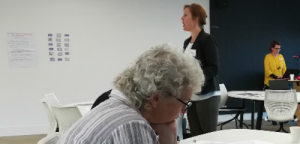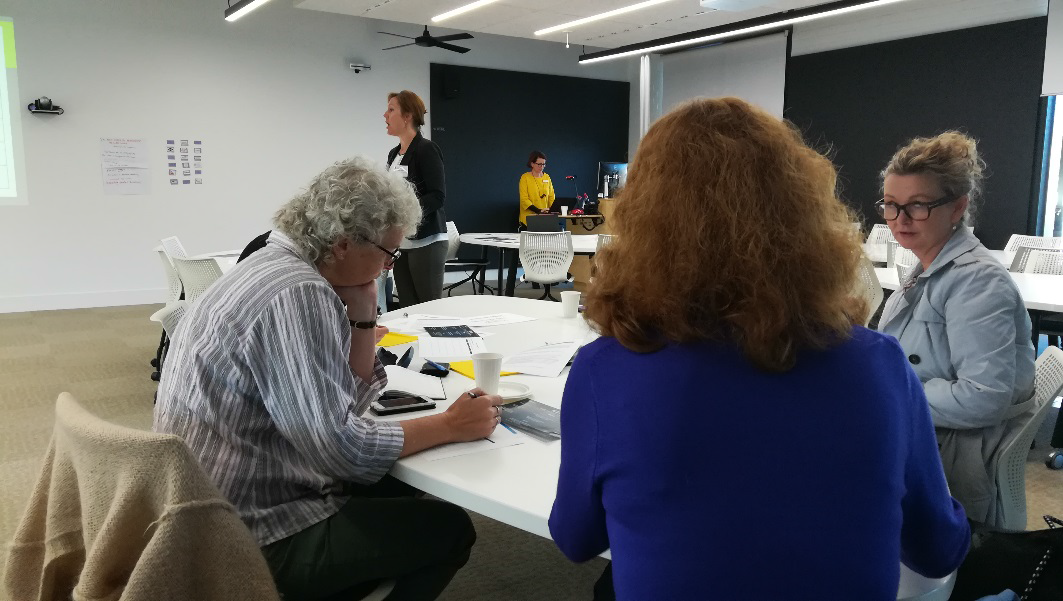Think Pair Share
Students work together to solve a problem or answer a question |
The class:
Workshop: Using Active Learning strategies (Kellie Smyth, Professional Learning Lead) This workshop was a 90-minute presentation to attendees at Improving University Teaching (IUT) conference designed to help participants learn and invite discussions on active learning strategies and flip classroom. |
 |
The students will learn:
The outcomes of the workshop was to give participants an understanding of the benefits of using active learning strategies such as Think Pair Share approach in their teaching. The Flip classroom model was used as content and the strategy was Think Pair Share. The idea was to model good practice in our own presentation by including elements of the Flipped Model, as well as providing participants opportunities to familiarise themselves with some strategies to implement in their own practice. |
This is what it looks like (active learning):
Set up of the Learning Environment:
The room was set up for small group work, as this reflected the style of the presentation. We wanted the classroom to be open enough that everyone could participate in the discussion. As we know the number of attendees, we had an idea of numbers and designed the room accordingly.
Process/Instruction:
As participants entered the room, we directed them to make small groups at the tables and introduce themselves to their peers. We ensured that the tables had roughly the same numbers on them (Diagram 1). Where possible we preferred even numbers, but it is not a huge issue if this isn’t possible.
Diagram 1 – furniture setup, can be in a group or in pairs (right)

 |
At the start of the presentation, we outline the overall direction of how the workshop will run, including expectations of the participants. It is important that you get buy-in from all participants for this to be an effective learning activity, and so it’s important to spend a few minutes explaining the benefits of the session. Active learning is a collaborative learning strategy, and the Think Pair Share activity requires students to work together to solve a problem or come to a shared conclusion and would help build deeper understanding.For the activity itself, participants were asked to watch a video on the Flipped Model. Once the video was over, they were then asked to think about how they could implement the model into their own teaching, pair up with someone at the table and discuss this with them, and then share their ideas with the wider group.
Each element of the activity was timed to ensure that the activity and discussions were focused, productive and structured.
The effect of learning this way:
Participants worked collaboratively to come to a shared understanding of what a Flipped Model (content) was, but also ways that they could implement it into their own classroom.
Pairing up with other experienced practitioners (strategy) helped them to develop their scholarship around this, and gave them an opportunity to share their own experience with a network of like-minded peers.
Their learning was activated through group discussion and problem-solving, and gave them an opportunity to consider how to implement the theory into practice, rather than just reading about it. This helps to contextualise the information and make it useful. |
How can this be applied to other classes/student cohort?
The Think Pair Share activity can be used in almost any class, and with any student cohort. Any key concept or content can be used as the trigger question. The activity can be used as part of a planned lesson, but is also easy enough to implement spontaneously if you see that your students are not understanding a key concept. |
 |